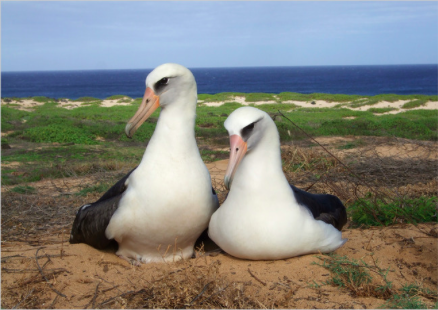|
Written by Julia Zeh
Edited by Olivia Ghosh Does homosexuality exist in animals other than humans? Yes, and no. From the perspective of Darwinian evolution, homosexuality is a puzzling concept. According to Charles Darwin, natural selection works to promote fitness in the sense of increasing reproductive output. In order for certain traits to evolve, they must be adaptive, meaning the benefits to an animal’s reproductive success must outweigh the costs. But from this standpoint, how can homosexuality evolve? By definition homosexuality has no reproductive output and takes away from the reproductive success of the individual and the species, because homosexual sex cannot result in offspring. Yet, same-sex relationships still exist in nature, and even though they don’t lead directly to an individual passing on its genes, they still must have some adaptive value. In fact, homosexuality is not even a rare trait; so far over 450 species have been identified which exhibit homosexuality. So what is the adaptive value? Why aren’t all relationships heterosexual in the animal kingdom? The answer lies in the benefits of homosexual relationships, including benefits to social relationships and hierarchies, pleasure, and parental care. These benefits are exhibited in species such as the Laysan albatross, bonobos, bottlenose dolphins, domestic sheep, and humans. Laysan albatrosses usually mate for life, but these mating pairs are not always male-female pairings. One third of pair bonds are between two females and these females try to mate with each other and care for their offspring together. Males do still mate with females, so offspring are produced, but males don’t usually stick around. This is where the female-female pair bond is useful; the females take care of their babies together with equal responsibility. Males provide no parental care, so having two female parents is actually adaptive and beneficial because it helps with parental care and offspring fitness. As opposed to the albatross, both bonobos and bottlenose dolphins use sex as a strategy for social communication. Both of these species are social mammals with complex social relationships and, as with many other species, sex is used in maintaining these complex relationships. In bottlenose dolphins, homosexual sex is exhibited in both males and females and it is used to form strong social bonds. Bonobos are similar. One of the most peaceful species on the planet, these animals use sex as a peacekeeping strategy, and the groups with more instances of homosexual sex are more peaceful. Bonobos establish matriarchal societies in which social status is established through sexual relations, both for the dominant females as well as for subordinate males. In addition, this species replaces aggression with sex, and mating behaviors are observed in individuals both very young and old, as well as between male-female pairs, male-male pairs, and female-female pairs. In domestic sheep, on the other hand, some individuals never form female-male pairs. Certain males mate with another male for life, showing no interest in females, even when they are ready to breed. This behavior likely evolved because the gene that promotes homosexuality in males also benefits reproductive output in females. For example, this same gene could increase fertility in females, thus making the reproductive benefits to the species greater than the costs of a few males who never reproduce. This link between genes that increase fertility in females and homosexuality in males has been proposed, but the specifics are still unclear. But there is also a reason to say that no species of wild animal is truly homosexual other than humans. Although there are male domestic sheep who never mate with females, spending their entire lives only interested in males, this is likely due to artificial selection by humans. This behavior has only been observed in domestic sheep, not wild sheep, and it is likely that humans bred their sheep to be more fertile. This increased the frequency of homosexuality, so it is not necessarily a natural occurrence. All of the examples described previously, other than domestic sheep, are technically bisexual. They all have one main thing in common: despite the presence of homosexuality, all individuals still mate with the opposite sex at some point and produce offspring. So why are humans the only wild animal species with truly homosexual individuals? The answer is we don’t know. Research has been done on how hormones and brain circuitry may cause homosexuality, but as for its evolution and the reason why it hasn’t evolved in other animals, the answer is not yet clear. But what is clear is that homosexual sex and pair bonds are both natural and actually quite common, and there are a huge number of species which, although they do not exhibit true homosexuality, do exhibit bisexuality.
0 Comments
Leave a Reply. |
Categories
All
Archives
April 2024
|

